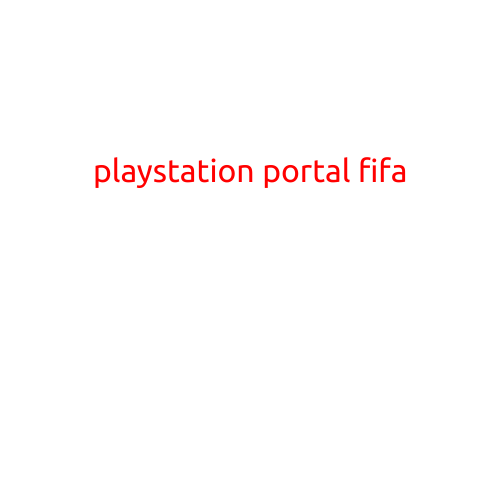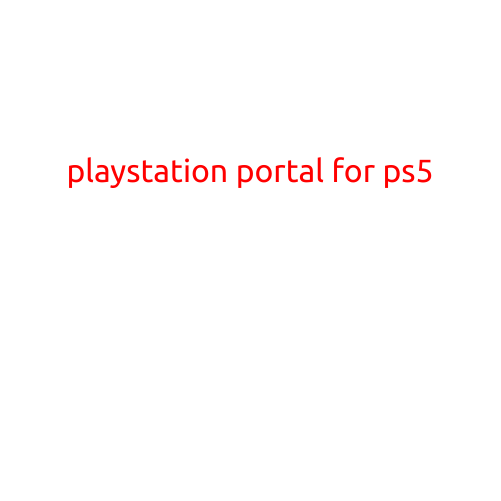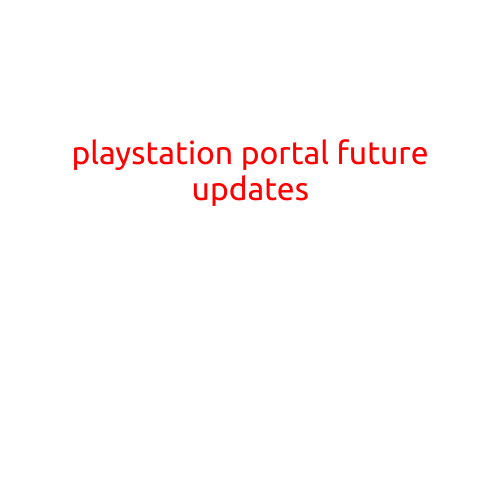
PlayStation Portal Flop: Can Sony Learn from This Failure?
The gaming world was abuzz with excitement when Sony announced the development of a PlayStation-branded portal, a concept that promised to revolutionize the way players interacted with their games and the PlayStation ecosystem. Dubbed the “PlayStation Portal,” the ambitious project aimed to create a seamless, immersive experience that would bridge the gap between console gaming and the vast expanse of the web.
However, in a shocking turn of events, Sony abruptly canceled the project without explanation, leaving fans and investors alike wondering what went wrong.
What Was the PlayStation Portal?
The PlayStation Portal was conceptualized as a futuristic gaming hub that would allow players to access various aspects of the PlayStation universe, including games, streaming services, and social media, in a single, streamlined environment. The portal would have utilized advanced machine learning algorithms to learn players’ preferences and serve up personalized content recommendations.
Gamers would have been able to navigate the portal using a intuitive interface, easily discovering new games, keeping up with friends, and engaging with the PlayStation community. The portal would have also included features such as streaming capabilities, live events, and exclusive content, making it a one-stop shop for all things PlayStation.
Why Did the PlayStation Portal Flop?
While Sony never officially disclosed the reasons behind the cancellation, industry insiders and analysts have pointed to several possible factors that contributed to the project’s demise. Some of the key issues include:
- Scope Creep: The project’s ambitious scope may have overwhelmed the development team, leading to delays and ultimately, cancellation.
- Lack of Clear Direction: Without a clear vision for the portal’s purpose and target audience, it’s possible that the project lacked focus, making it difficult to execute effectively.
- Technical Challenges: Integrating numerous services and features under a single umbrella proved to be a significant technical hurdle, one that the development team may not have been equipped to overcome.
- Competition and Market Saturation: With the rise of alternative gaming platforms and services, Sony may have struggled to justify the investment required to develop and maintain a proprietary portal.
What Can Sony Learn from This Flop?
While the failure of the PlayStation Portal is a significant setback, it also presents an opportunity for Sony to reassess its priorities and approach to the gaming landscape. Some key takeaways for Sony could include:
- Simplify and Focus: Instead of attempting to create a comprehensive portal, Sony could focus on developing targeted, specialized services that cater to specific player needs.
- Listen to Feedback: Engage with the gaming community and gather feedback to better understand what players want and need from a platform.
- Collaboration Over Competition: Consider partnering with other industry players to create a more collaborative, open gaming ecosystem that benefits all parties involved.
In conclusion, the PlayStation Portal’s cancellation serves as a cautionary tale for innovation in the gaming industry. While ambition is essential, poorly executed plans can lead to costly failures. Sony can choose to learn from this flop and redirect its resources toward more focused, community-driven initiatives that better serve the gaming audience.





